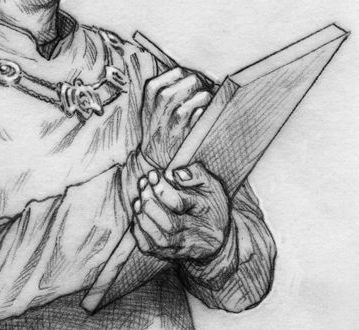“...when the Earl comes back I have to present accounts...”
Great lords were seldom in one place for long, but medieval bookkeeping allowed them to check on exactly how much was spent on each estate. Accounts could be kept on ‘tally sticks’ which were thin wooden slats marked with notches to indicate quantities of provisions bought or used.
“...guests and servants three times a day...”
A great household spent about 40% of its income on food and drink. The Chamberlain would know exactly how many people were expected at each meal, and allocate provisions from the stores. Expensive items such as spices or fine flour were kept under lock and key.
“...he’ll bring a hundred or more people with him...”
The Earl’s castles and estates had their own staff, while his travelling household included his personal entourage of soldiers, priests and squires, as well as his wife’s retinue. Coping with both groups put a strain on even the best-run domestic system. Countess Joan de Valence sometimes had nearly 200 people in her entourage, and King Edward I had double that. When a king visited a lord in residence it was a perfect storm, and the costs could be crippling.
